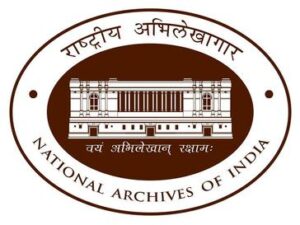The NAI, operating under the Ministry of Culture, serves as the repository for all non-current government records, which are made available for use by administrators and researchers. It is responsible for preserving records of lasting value to the Government of India and is the largest archival collection in South Asia.

History:
Originally established as the Imperial Record Department on March 11, 1891, in Kolkata (Calcutta), the NAI was moved to New Delhi in 1911. The current building, designed by Sir Edwin Lutyens, was completed in 1926, and the full transfer of records from Calcutta to New Delhi was completed by 1937.
The NAI also oversees the implementation of the Public Records Act, 1993, and the Public Record Rules, 1997.
Currently, the National Archives holds over 340 million pages of public records, which include files, volumes, maps, treaties, rare manuscripts, cartographic records, parliamentary debates, censuses, travel accounts, proscribed literature, and government gazettes. A significant portion of its oriental records is in languages such as Sanskrit, Persian, Odia, and others.
Access to these records is regulated by the Public Records Rules, 1997. The NAI is responsible for preserving government records but does not handle classified documents. It operates one regional office in Bhopal and three Records Centers located in Bhubaneswar, Jaipur, and Puducherry.
Abhilekh PATAL:
The Abhilekh PATAL (Portal for Access to Archives and Learning) is an initiative by the NAI to provide online access to its extensive collection of Indian archival records. This comprehensive web portal allows users to explore the NAI’s reference media and digitized collections, which includes over 2.7 million files. The digitized collection provides online access to more than 71,792 records.




